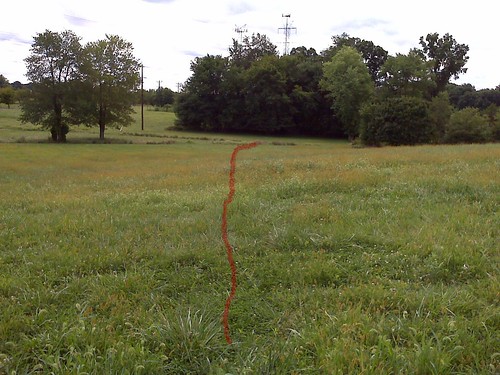[Here's a post I wrote on the PositiveGunDogs list in response to a question in which the poster asked whether to reinforce when her Standard Poodle "eventually" came back to her after chasing birds.]On Aug 10, 2009, at 6:23 PM, Ann Sheltz wrote:
Should I continue to reward him big when he eventually comes back to me.Hi, Ann. I'm reluctant to jump into this thread, because unlike some others, I don't believe that there is any straightforward way to train a solid field recall without aversives, at least for some dogs including my two Goldens. I have read and followed a great many instructions on how to do so, and my dogs do have exceptionally good and ever improving recall, but perfectly reliable recall still eludes me.
Nonetheless, I'm inspired by the above passage in your email to express some principles that I think apply. Hopefully other people on the list will correct those points that they believe are incorrect, or provide additional information that may also help. Here are my thoughts:
* Try your best never to call a dog when you're not absolutely sure she'll come. Some people speak of being willing to bet a certain amount of money, like "If you're not willing to bet $100 the dog will come, don't call her." I think everyone bets wrong once in awhile, but every mistake digs a hole that will take many correct responses to dig out of, and you can't unring a bell.
* I agree with Mary Beth's excellent point that the tweeties :0) will train your dogs that chasing them is futile. That doesn't just apply to flying birds. My dogs have pretty much given up swimming around chasing wild ducks and geese for the same reason: After repeated tries, they've gradually become convinced that they'll never catch one. To take advantage of that, you'll have to let your dog try to catch tweeties under safe conditions. In accordance with my previous point, you'll also NOT try to call the dog until you're certain she has given up the chase and is ready to respond to your call.
* I have heard arguments on both sides whether to reward every recall (which is the question I think you're asking in the quoted passage). For example, Bob Bailey promotes continuous reinforcement rather than ratios (intermittent reinforcement), except for certain situations which I don't think apply to the field recall. On the other hand, Karen Pryor, Jean Donaldson, and others write that all cues should be put on a ratio. The argument for using intermittent reinforcement is, I believe, that it makes the cue less likely to be extinguished by an occasional unreinforced incident (extinction proofing). The argument for using continuous reinforcement (no ratios) is that it reduces variability. I personally believe it's best to reinforce every recall.
* Many training plans have been invented to train recall without aversives. As I mentioned, I don't believe any of them will produce perfect recall for every retriever in field conditions, but I think many of them do have great merit. One common element that I think applies to all of them is incrementally proofing the dog's recall at increasing distances, with increasingly difficult distractions, and in many locations, and I would recommend following a program in which you systematically do exactly that. In addition to incremental proofing, I'd also recommend getting in as many successful and reinforced recalls as you can, even very easy ones, every day. The importance of recall for a field retriever cannot be overstated.
* Never let any other priority compete with reinforcing the dog's recall. For example, let's say you've decided you need to negatively punish something or other. Don't call the dog and then crate her. If you're going to crate her, go get her, slip on her lead, and walk her to her crate WITHOUT calling her. If you call her, that's it, consider your opportunity to punish whatever came before to be gone forever.
* A procedure I've mentioned before, which Jody Baker calls "wearing the dog", can benefit your relationship with the dog in many ways, and recall is one of them. Put the dog on a short lead and attach it to your belt, then go about your business as usual. As the dog becomes increasingly tuned into you, good things happen in your relationship, and one of them is improved recall.
I'd like to throw out one other vital principle: With all the +R you have given, and will give, your dogs for recall, your recall cue itself becomes an incredibly strong reinforcer. If the dog does something you don't want her to do, and you call her, you have just reinforced that undesirable behavior. This can have dangerous consequences, and it can also have annoying consequences. An example of a dangerous consequence: calling a dog who has just started to chase a car. That's just like using the world's best clicker to shape chasing cars. An example of an annoying consequence: calling a dog who is coming in from a retrieve too slowly. Again, you are reinforcing that behavior. A common version of that is cheerleading, in which the trainer is trying to encourage a more vigorous response, but is instead reinforcing the less vigorous response in progress.
Best of luck with your training. I hope you'll keep us up to date with your progress.
Lindsay, with Lumi & Laddie (Goldens)
Laytonsville, Maryland
Field training blog: http://lumi-laddie-test-series.blogspot.com (see "Archive of Video Blog Entries" in right margin)
YouTube playlists:
-- Lumi: http://www.youtube.com/view_play_list?p=BC338082E0B890DB
-- Laddie: http://www.youtube.com/view_play_list?p=9A44913FB240932A
To further explore the frontiers of dog training, join our DogTrek list at: http://groups.yahoo.com/group/DogTrek

